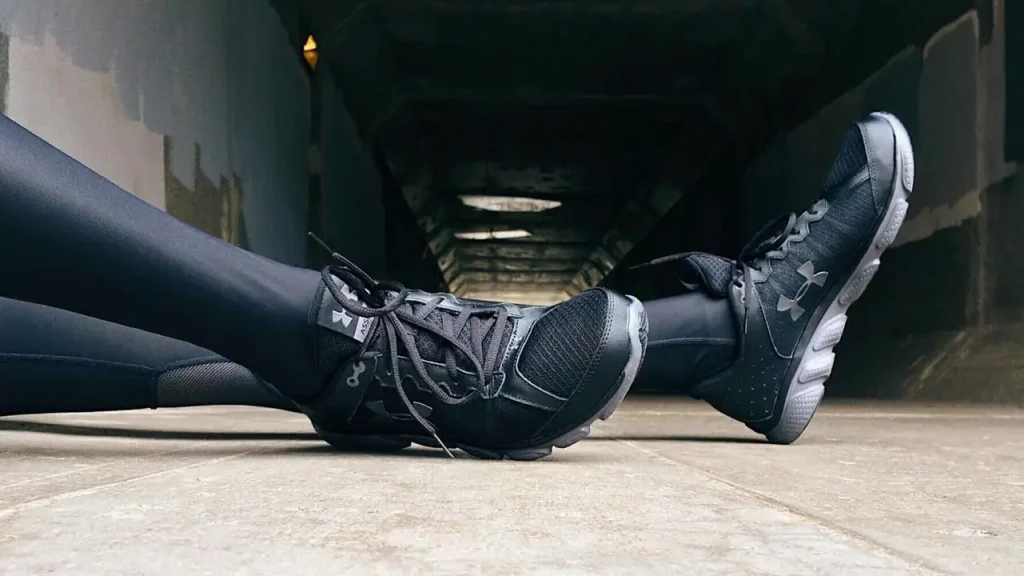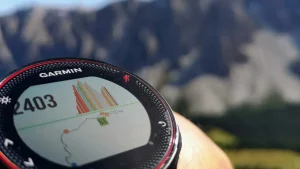
sports fashion trends and sales analysis
I was sitting in a coffee shop the other day, and I couldn’t help but notice it. At least half the people were wearing what you’d call “gym clothes.” High-end leggings, pristine sneakers that have never seen a treadmill, technical jackets designed for a mountain climb but used for a caffeine run. It’s a uniform, and it struck me just how massive this world has become. It’s no longer just about sportswear; it’s a complex ecosystem that demands a sharp eye on sports fashion trends and sales data. This isn’t just about what athletes are wearing on the field. It’s about what we are wearing everywhere else. This industry is a beast, a fascinating, fast-moving creature fueled by culture, data, and our collective obsession with comfort and coolness.
Unpacking the Dynamic World of Sports Fashion
Let’s be clear: the term “sportswear” feels almost outdated now, doesn’t it? It conjures images of sweaty gym shorts and basic cotton tees. But what we have today is a cultural phenomenon that blends high performance with high fashion. It’s a multi-billion dollar industry where the lines are not just blurred; they’ve been completely erased. A careful study of the market reveals a landscape that’s as much about self-expression as it is about physical activity. Think about it. Brands are dropping collections like fashion houses, with seasonal looks and limited-edition collaborations that sell out in minutes. It’s a game of speed, style, and incredibly smart marketing. Thorough market analysis is the only way for brands to keep up with the breakneck pace of consumer demand and cultural shifts. It’s less about sports and more about the fashion of life.
Decoding the Latest Sports Fashion Trends
So, what’s actually happening on the ground level? It’s a mix of a few powerful currents that are pulling the entire industry in new directions. Some of it is practical, some of it is pure aesthetics, and all of it is driven by a deep understanding of what people want to wear right now. The most successful brands are those that excel at analyzing trends and sales data, allowing them to predict and even create the next big thing.
From Gym to Street: The Rise of Athleisure
This is the big one. The absolute juggernaut. If you’re wondering why athleisure wear is so popular, the answer is both simple and complex. On the surface, it’s about comfort. Of course it is. We traded our jeans for joggers and never looked back. But it goes deeper. Athleisure is aspirational. It signals a lifestyle—one of health, activity, and casual success. It’s the ultimate expression of “effortlessly cool,” even if a lot of effort went into the look. And let’s be honest, it has become a status symbol. Certain leggings or sneaker brands are the modern-day equivalent of a luxury handbag. It’s a fascinating cultural shift, and market data confirms its dominance. There’s a reason for it, and it explains why athleisure wear is so popular. It just works for modern life.
Performance Meets Style: Innovations in Athletic Wear
But it’s not all about lounging. Real innovation is happening in the fabrics and construction of these clothes. We’re talking about materials that are breathable, moisture-wicking, antimicrobial, and have four-way stretch—all while looking sleek and stylish. You can wear a technical top on a morning run and then keep it on for a brunch meeting without looking out of place. This fusion of function and fashion is a core tenet of the industry. Brands that successfully merge these two aspects are the ones winning, a fact consistently highlighted by credible market analysis. The modern consumer expects their clothes to perform, whether they’re hitting a new personal best or just running errands. The constant evolution of this space is a direct result of meticulous data analysis that prioritizes this hybrid demand. It’s all about clothes that can keep up.
The Influence of Culture and Social Media on Sports Apparel
You cannot talk about modern fashion without talking about social media. It’s the engine room. The impact of social media on sportswear design is impossible to overstate. A single influencer post can make a product go viral overnight. Celebrity collaborations, like those from major music artists or models, create hype cycles that traditional advertising could only dream of. Instagram and TikTok are the new runways. This is a double-edged sword for brands; it offers incredible reach but also demands constant vigilance and authenticity. The public can spot a soulless cash-grab from a mile away. The visual nature of these platforms has pushed design to be more graphic, more colorful, and more “Instagrammable.” A solid market analysis must now include social listening and sentiment analysis. The impact of social media on sportswear design has fundamentally changed the speed and direction of trends.
Data-Driven Insights: A Deep Dive into Sports Fashion Sales
Okay, let’s switch gears and talk numbers. Because for all the talk of culture and style, this is a business. A massive one. And the most successful players are borderline obsessive about data. Granular sales analysis is what separates the winners from the losers. It’s about moving beyond guesswork and gut feelings to make informed decisions about everything from product design to inventory management. Gut feelings don’t cut it anymore. Not even close. You need hard data, and proper data analysis provides just that.
Market Segmentation and Growth Drivers in Activewear
Who is buying all this stuff? The answer is… everyone. The market is incredibly diverse. You have the hardcore athletes, the weekend warriors, the yoga enthusiasts, the fashion-forward teens, and the comfort-seeking professionals. A key question is what drives sportswear market growth. It’s this very diversification. The market is no longer reliant on a single demographic. Growth is fueled by the wellness movement, the casualization of dress codes, and the global influence of streetwear culture. Detailed market analysis helps brands identify and target these specific segments with tailored products and marketing messages. So, what drives sportswear market growth? In short: its expansion beyond the confines of sport itself.
Understanding Consumer Behavior in Sports Apparel Purchases
Diving even deeper, we have to look at the ‘why’ behind the ‘what’. This is where understanding consumer preferences in activewear becomes critical. Why does a consumer choose a $150 jacket from one brand over a $70 one from another? It’s a mix of perceived quality, brand story, community affiliation, and sustainability credentials. People aren’t just buying a product; they’re buying into an identity. They want to feel like they are part of a tribe. Robust consumer research will track these motivations, looking at customer reviews, return rates, and social media engagement to build a complete picture. Truly understanding consumer preferences in activewear means looking past the transaction to the motivation behind it. It’s complex, it’s messy, but it’s where the real insights are found.
The Digital Shift: E-commerce’s Impact on Sports Fashion Sales
The rise of online shopping has been a total game-changer. Brands can now build direct relationships with their customers, bypassing traditional retailers. This direct-to-consumer (DTC) model provides a treasure trove of data for effective analysis. Brands know exactly who is buying what, where they live, and what they looked at before purchasing. This allows for hyper-personalized marketing and product recommendations. The digital shelf is infinite, allowing for a wider range of products and niche offerings that wouldn’t be viable in a physical store. Any modern market analysis is heavily weighted towards e-commerce data for this reason.
The Road Ahead: Future Trajectories in Sports Fashion
So, where is this all headed? The pace of change isn’t slowing down. If anything, it’s accelerating. A few key areas are poised to define the next chapter of this industry, and any forward-looking market analysis is already focused on them. Predicting the future is a fool’s game, but we can see the writing on the wall.
Sustainable Practices and Ethical Manufacturing in Focus
This is moving from a “nice-to-have” to a “must-have.” Fast. Consumers, especially younger ones, are demanding transparency and accountability from the brands they support. They want to know about the materials used, the conditions of the workers, and the carbon footprint of their clothes. This has led to a surge in interest in a guide to sustainable sports fashion brands. Brands are responding with recycled materials, circularity programs, and a renewed focus on durability. The ethical considerations in athletic clothing production are now front and center in brand conversations. Comprehensive market analysis now often includes sustainability metrics as a key performance indicator. This isn’t a trend; it’s a fundamental shift in consumer values. And brands that ignore it do so at their own peril. A poor record here can completely derail even the most popular brand.
Technological Advancements Shaping the Next Generation of Sportswear
Here’s where it gets fascinating. The future of smart fabrics in sports apparel is wild. We’re talking about clothes with integrated sensors that can track your heart rate, muscle output, and body temperature. Think shirts that can cool you down or leggings that provide real-time feedback on your running form. The question of how technology influences sports shoe design is being answered with 3D-printed midsoles customized to your specific foot shape and gait. It’s the ultimate in personalization. This fusion of tech and textiles is still in its early stages, but it has the potential to completely revolutionize what we wear and how it performs. Any forward-thinking brand is keeping a very close eye on these innovations. The future of smart fabrics in sports apparel is less science fiction and more of an impending reality. The application of this tech, especially as it relates to how technology influences sports shoe design, will be a key differentiator for brands. It’s not just about data collection; it’s about providing tangible benefits to the wearer.
Staying Ahead: Navigating the Evolving Sports Fashion Landscape
So there you have it—a whirlwind tour of a chaotic, creative, and data-obsessed industry. From the comfort of athleisure to the cutting edge of smart fabrics, the world of sports fashion is constantly reinventing itself. To succeed, brands need more than just a great logo or a celebrity endorsement. They need to listen to their customers, watch the culture, and not be afraid to innovate by using deep, nuanced, and continuous analysis of fashion trends and sales data.
For consumers, this evolution means more choice, better products, and clothes that truly fit our modern lives. Combining hard data with cultural intuition is what helps brands decide on the best sports fashion trends to invest in. Staying informed is no longer optional; it’s the only way to navigate the complexities of this exciting landscape. And that’s something we can all get behind.







